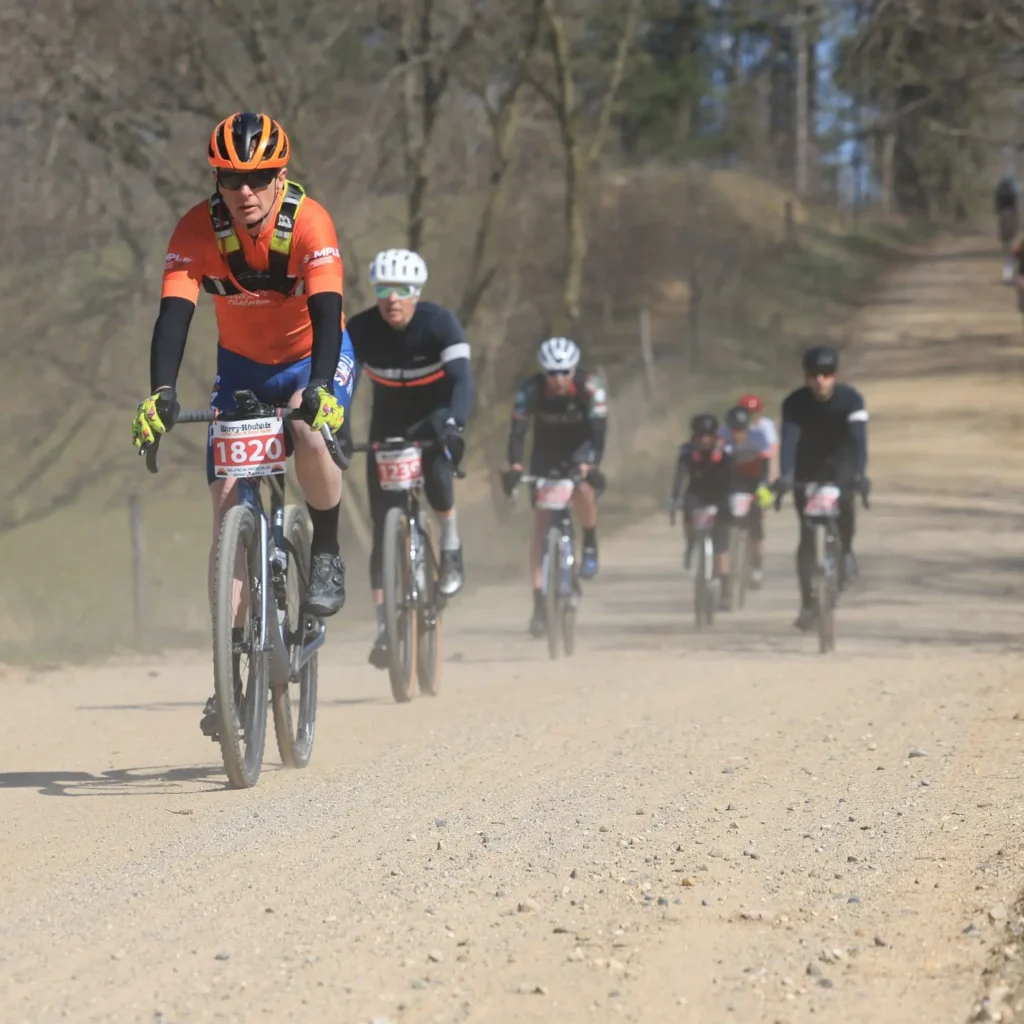
Cycling alone doesn’t cut it past midlife.
For cyclists over 50, a structured strength program is key, not only to maintain speed and endurance, but to protect muscles, bones, and joints as we age.
Why strength training matters after 50
1. Prevents muscle and bone loss
Sarcopenia (muscle wasting) accelerates with age, leading to strength deficits, reduced VO₂ max, slower recovery, and higher injury risk.
Resistance training not only halts but can reverse these losses, even in people aged 85+
Plus, heavy lifting adds bone-straining load—unlike cycling—critical to fend off osteopenia common in Masters cyclists.
2. Improves pedaling power & efficiency
This study shows that adding knee-extension strength work enhances cycling efficiency and restores age-related power gaps.
Strength training increases sprint and peak power (Wingate results: +9 to 13 percent), which is hugely beneficial for steep climbs and race surges.
3. Maintains neuromuscular capacity
Aging brains and nervous systems lose the ability to activate muscles quickly.
Strength work offsets this, preserving the neuromuscular function crucial for sudden movements like sprints and balance.
4. Supports bone & tendon health through eccentric work
Eccentric (lengthening) strength exercises build tendon resilience and bone strength, helping prevent overuse injuries common in older athletes.
5. Boosts hormonal and mental resilience
Lifting elevates testosterone and supports cognition, mood, and even red blood cell production—all factors that amplify endurance efforts.
The Evidence: What the latest science shows
This meta-analysis reveals that concurrent training (strength + endurance) is extremely effective for people aged 50–73:
- Strength gains
- Power increases
- Cardio capacity
The best results come from about 12-week blocks, with 30 to 60 minutes of strength, two or three times a week, and pairing strength and endurance in a thoughtful sequence, usually strength training before endurance training.
Importantly, strength work does not harm endurance gains; it can actually boost lactate threshold and muscular economy without affecting VO₂max.
Strength Program: What to focus on
1. Strength exercises (twice/week)
- Squats or lunges (with weights or bands) – 2–3 sets of 8–12 reps
- Deadlifts and single-leg Romanian deadlifts – improves posterior chain strength (glutes, hamstrings, back)
- Step-ups or Bulgarian split squats – unilaterally targets imbalances
- Upper body push and pull exercises – chest press, shoulder press, rows, pull-downs
- Planks, Hollows, Pallof presses – stabilize core for efficient pedaling
Include eccentric-loading, e.g., slow descent in squats or negative-only calf raises.
2. Strength-plyometric blend
- Add power moves like jump squats or kettlebell swings for explosive capacity.
3. Periodize training
- Start with foundational hypertrophy (moderate loads with eight to 12 repetitions), then progress to heavier strength phases (heavy loads with four to six reps), then power phases.
- This aligns with periodization principles that prevent overtraining.
4. Recovery and load balance
- Separate strength and endurance sessions by 24 hours (or different days) to reduce interference.
- Watch for overtraining signs—fatigue, plateau, performance dips.
5. Nutrition & sleep
- Eat about 20–25 g of protein post-workout and before bed to enhance muscle protein synthesis
- Prioritize 7 to 9 hours of sleep to support recovery.
Sample Week (Cyclist over 50)
| Day | AM | PM |
| Mon | Moderate ride (60–90 min) | Strength session (lower-body) |
| Tue | Recovery ride or rest | Yoga/mobility |
| Wed | Intervals (hard) ride | Strength |
| Thu | Endurance ride (2–3 hr) | Light core/mobility |
| Fri | Strength (lower-body power) | Recovery spin |
| Sat | Tempo intervals/group ride | Stretching/foam rolling |
| Sun | Long easy ride | Off |
Adjust based on goals—e.g., race vs gravel tour vs health maintenance.
FAQs
Q: Will lifting hinder my cycling performance?
A: No—if you follow separation guidelines and program well, concurrent strength increases muscular efficiency and endurance without hurting VO₂max.
Q: Am I too old to start lifting?
A: Not at all. Age 50+ lifters—including frail elders—safely gain muscle and strength, improving fall prevention and daily function.
Q: Best lifts for cyclists?
A: Deadlifts, single-leg Romanian Deadlifts, combined with planks, Pallofs, kettlebell swings, and single-leg work.
Q: How often?
A: Two to three strength workouts per week, 30–60 minutes each, with 12‑week progressive blocks.
Strength training is essential for cyclists over 50
For cyclists over 50, strength training isn’t optional—it’s essential.
Combining lifting with riding enhances power, delays aging, boosts endurance, and protects against injury.
With smart programming – progressive overload, recovery, and nutrient timing – Masters’ cyclists can not only stay competitive but thrive well into their later years.
Three things to know about strength training for cyclists over 50:
1. Strength training is essential—not optional—for cyclists over 50.
As we age, muscle mass, bone density, and neuromuscular function decline. Regular strength training helps reverse these losses, boosts cycling power and efficiency, and significantly reduces injury risk.
2. Concurrent training improves both strength and endurance without negative interference.
When properly programmed, combining strength work with endurance cycling enhances lactate threshold, muscular economy, and overall performance—especially in older athletes—without compromising aerobic fitness.
3. A focused, periodized strength plan builds resilience and power.
Effective training for older cyclists includes compound lifts (like squats and deadlifts), eccentric loading, and power-focused movements, ideally done two to three times per week. Programming should align with riding goals and allow for adequate recovery.
Need more?
Unlock the secrets to mastering gravel racing with our FREE Guide to Gravel Racing! Get yours here.
SIGN UP FOR A FREE Virtual Coffee so we can discuss your goals, ask questions, and talk about making your endurance training more effective, fun, and Simple.
Paul Warloski is a:
- USA Cycling Level 1 Advanced Certified Coach
- RRCA Running Coach
- Training Peaks Level 2 Coach
- RYT-200 Yoga Instructor
- Certified Personal Trainer
- Certified Nutrition Advisor




